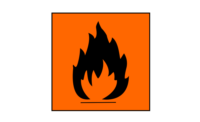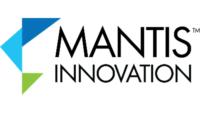Overlooking colorful Darling Harbour and on the edge of Sydney’s bustling central business district, Four Points by Sheraton is just a short walk away from an array of entertainment venues and shopping areas. As Australia’s largest hotel, Four Points by Sheraton offers an extensive range of facilities with 630 rooms including 45 suites.
The hotel caters to both business and leisure travelers and offers several amenities including meeting facilities, casual brasserie/restaurant, lobby bar and lounge, an historic English pub, business center, and fitness center. A short walk over the historical Pyrmont Bridge takes you to the edge of Darling Harbour and the entrance to the Maritime Museum, Sydney Exhibition & Convention Centre, and China Town.
The hotel staff’s exceptional service has been recognized by winning “Best Superior Hotel” at the 2005 Australian Hotel Association’s Awards for Excellence (Australia) and “2005 Hotel of the Year” (Four Points Brand) in the 2005 Starwood Hotels & Resorts Worldwide Awards. In previous years, the hotel has won the “Ultimate Service Awards” (CNN, American Express, Taylor Nelson Sofres Hospitality and Leisure) for the Australia, New Zealand, and Pacific Isles division in 2001 and 2002.
Yet, one of the biggest keys to the hotel’s success lies in staying ahead of the curve and its competitors when implementing leading-edge technology. In 2003, the hotel completed a refurbishment shortly after a major upgrade of the hotel’s back-of-house systems began. Nigel Wright, the hotel’s chief engineer listed reduction of utility consumption as his primary goal of the upgrade. Specifically, he sought to replace the legacy control system and the inefficient chiller plant.
- An open platform with real enterprise connectivity and a Web portal: IT-based, thin-client, browser-based (with no special software required by operators and users to connect to and use the software applications).
- Seamless customized interfaces to the property management system, lighting systems, paging systems, and LON-based intelligent guest room controllers.
- Support for Oracle and XML reporting.
- A maintenance asset management system which would operate with barcode readers, hot WiFi database synchronization, and a comprehensive inspection module, seamlessly integrated with the BMS and help desk and enterprise connectivity for asset depreciation calculation for the corporate accounting system.
All works had to be carried out via a systematic approach providing an overnight completion of the installation within a group of rooms or public areas, thus minimizing the impact on occupancy and guest experience. For a hotel that has consistently high occupancy rates, the availability of guest rooms was paramount.
|
Stage 1: Replacement and expansion of the base BAS
- LON and Modbus were the protocols selected, comprising control over all major AHU, hotel room fancoil units (FCUs), chiller plant, external lighting, hydraulics, heating plant, and VSD installations including high level interfaces.
- The hotel’s security system was also integrated into the base building management, including passive infrared detectors (PIR), door read switches, and duress alarms.
- Interfaces were written to control the hotel’s existing Dynalight dimming system (RS232), and the property's paging system (TCP/IP).
Stage 2: Replacement of existing guestroom A/C controllers
- Invensys NML 13R LON controllers and S4 sensors, managed by the Niagara Framework, were installed.
- An interface was created to interface with the hotel’s property management system (XML over TCP/IP) using guest name and rooms status, thus allowing automatic setpoint control via room status and automatic reporting of room A/C faults.
Stage 3: Metering upgrade and installation of Vykon Energy Suite areas
- Gas: main meter, main kitchen, banquets kitchen, tenancies, and boiler plant.
- Water: main meter, main kitchen, tenancies, cooling towers, and guestroom hot and cold water supply.
- Electricity: main meter, main kitchen, and the four main mechanical services switch-board.
Stage 4: Chiller plant
- Replacement of the three existing chillers and installation of two PowerPax chiller sets incorporating Danfoss Turbocor compressors, redundant pumps with automatic changeover, and VSD installation on all pumps including high-level interface (LON).
- Chiller plant control managed by the Niagara framework, Modbus interface directly into the Turbocor compressors.
Stage 5: Tridium MwebCentral
- Selected modules included maintenance management, drawing management, contract management, a key performance indicators module, help desk and knowledge base and, of course, the main reason for product selection, MWebCentral Link high-level interface between the facility management system and BMS.
- Modules planned for future installation include time and attendance, and the design and implementation of an interactive voice response (IVR) module to allow job status updates through the property’s telephone system.
The majority of the upgrade works capital was approved with the understanding that it would be paid for by the ROI. In order to achieve these goals, Four Points chose Tridium’s E2 Energy Profiler and Cost Profiler application suites, which profile energy and utility usage, check meter readings and bills, and provide a link to the main portal to Tridium’s Tenant Billing module. Electricity, gas, fresh water, and wastewater all had to metered and profiled in order to see the actual usage profile and costs, as well as to structure an energy plan to allow the hotel to review the available energy rates and options. Metering also helped the hotel to implement the energy rate option and manage its energy costs.
All systems had to be capable of interfacing with Starwood’s financial systems and had to operate on an Oracle 10g database. When the project was being planned, hotel management expressed concern about the potential obsolescence of legacy building control systems and the possibility of being locked in to just one supplier. Now, however, they have an open, IT-based architecture that guarantees the longevity of their building control systems, assets, and business-related processes.
One To Watch
|
“We are very pleased with the final solution that has been provided by Tridium and Airmaster Australia. It is the first time that we have seen a truly complete Web-based enterprise FM solution. The MWebCentral FM suite is very flexible and the cornerstone of our automation to continually be in sync with improving efficiencies, returns, and total customer satisfaction,” said Wright.
According to Wright, examples of productivity and operational benefits since the IBMS implementation are:
- Receiving accurate month-end forecasting and the ability to find peak periods of consumption in order to plan energy management strategies around actual issues.
- Receiving real-time reports on plant issues. For example, if a cooling tower shows a high flow rate, Wright knows and can rectify the problem rather than looking at the data at month’s end when the damage (cost) has already been done.
- PM. Filters are only replaced when the dirty/change status is advised rather than a blanket replacement, which has led to lower replacement and labor costs.
- Customer experience. A/C complaints, which were previously the top complaint voiced by the guests, have been decreased by a metric of eight.
“Both Four Points by Sheraton Darling Harbour and General Property Trust, the hotel’s owners, are committed to the environment and the reduction of energy consumption. Projects like this are not possible without the financial backing of such committed owners, and it’s pleasing to say that in 2005 the hotel reduced its energy costs by 10.93%. With the system finally complete and with all energy strategies in place, 2006 looks to improve on these saving even further,” added Wright.






